Tiaras are perhaps the most characteristic jewel of the opening decade of the twentieth century: worn for formal and festive occasions they are characteristic of an exuberant, stylish and wealthy age. Jewellers were literally flooded with commissions for this desirable, obligatory accessory, and arguably more tiaras were constructed at this time than at any other.
The enduring appeal of the tiara | Part IV - Into the 20th century: the Garland Style, bandeaux and the return to vintage designs
In this fourth and final instalment we come up to date with the wide ranging developments for the tiara seen through the 20th century, and reassuringly this most constant of jewels enjoys a revival as the century comes to a close.

Image 1: A turn of the century pearl and diamond tiara. The fluid foliage design is the transitional stage between the realistic naturalism of the late 19th century and the formal neoclassical motifs of the Garland Style.

Image 2: A diamond necklace/tiara, circa 1900-1905 in the Garland Style. Note the delicate running leaf motifs and slender ribbon bows.
The Garland Style dictated the design, mainly set with diamonds in platinum, and decorated with garlands and ribbon bows, entwined ribbons and delicate scrolls, and at times suspended with drop-shaped pearls or diamond briolettes (see images 1, 2, 3, 4 and 5).

Image 3: A diamond tiara by Cartier Paris, a special order of 1911. A good example of the Garland Style, largely inspired by 17th and 18th century decorative motifs.
Among new designs were tiaras in the shape of spread wings, first designed by Cartier in 1899, inspired by the winged helmets worn by the flying Valkyries in the operas of Richard Wagner. Another favourite among the novel designs was the meander tiara, designed as a band of rigorously geometrical Greek key motifs (see images 6 and 7).

Image 4: An impressive diamond tiara created by Cartier Paris in 1905 for Mrs Mary Scott Townsend, an eminent member of Washington’s high society at the turn of the 20th century. The seven pear-shaped diamonds weigh approximately 17 carats in total.
Parisian couturier Paul Poiret, prompted by the success of the Ballet Russes’ production of Scheherazade, first performed in Paris in 1910, launched a series of fantastic, fluid gowns inspired by Persia and the Far East, accompanied by oriental turbans decorated with gem-set jewels and osprey or ostrich feathers (see images 8 and 9).

Image 5: A diamond tiara created in Vienna around 1911 by the Austrian court jeweller Köchert. Commissioned by Emperor Franz Joseph (1830-1916) it was a gift to Archduchess Marie Anne of Austria (1882-1940) on the occasion of her wedding to Prince Elie de Bourbon-Parma (1880-1959) in 1903.

Image 6: A pearl and diamond tiara, Cartier Paris, circa 1909. The rigorously geometrical Greek key motif is typical of the period. Commissioned by Sir Hugh Montagu Allan for his wife Marguerite Ethel, this tiara accompanied her on the ill-fated last voyage of the RMS Lusitania in 1915 when it was sunk by a German submarine. The tiara was saved by Lady Allan’s maids when they were rescued from the shipwreck.

Image 7: A diamond tiara, circa 1910, of meander design.
Tall, rigid and structured, the tiaras of the preceding centuries where not compatible with the new dress fashion and jewellers strived to create less formal but equally glamorous head ornaments. Aigrettes, jewelled ornaments to be worn in combination with the feathers they were named after, and bandeaux literally bands of gems worn low on the brow, often decorated with a vertical motif at the centre embellished with natural feathers, were favoured, (see images 10 and 11).
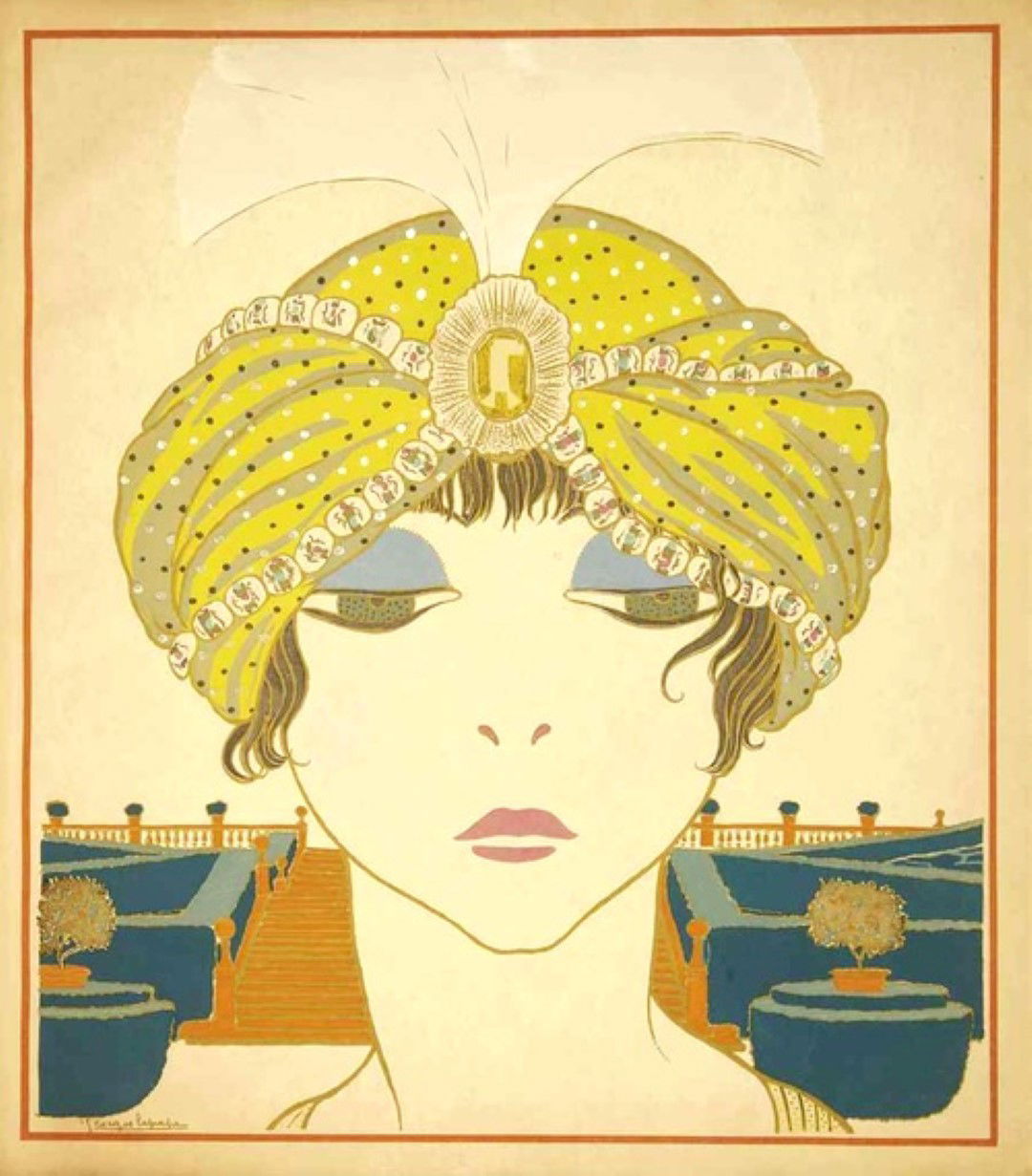
Image 8: From Les choses de Paul Poiret, Georges Lepape (1887-1971), 1911, Woman with a Persian turban, plate 6.
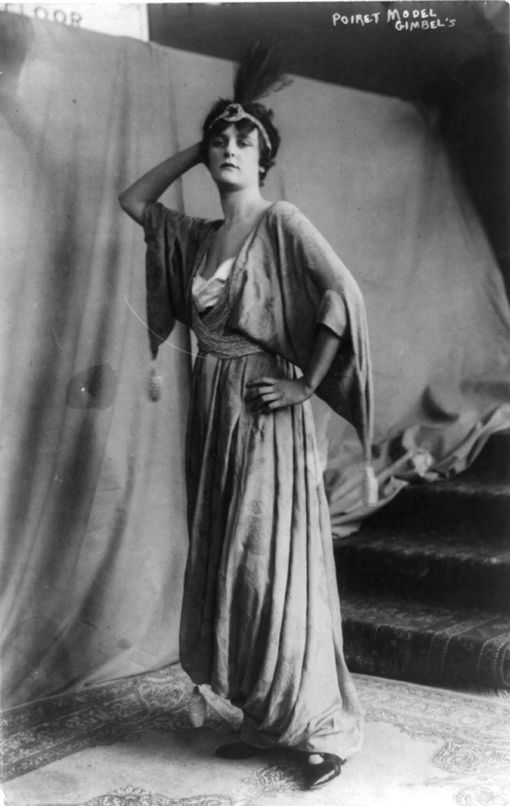
Image 9: A model wearing a Poiret evening gown and an aigrette, 1914.
The bandeau became the most characteristic head ornament of the 1920s. With its simple, linear shape well-suited to the Art Deco style and, worn low on the forehead, below a bobbed style, it was the ideal complement to the new hair-cut à la garçonne. The bandeaux of the 1920s abandoned the delicate decorative motifs of the garland style and adopted the geometrical shape which characterized Art Deco, namely meanders, lozenges, honeycomb patters, palmettes, stylised lotus flowers and the like. Diamonds remained the favourite gemstones to illuminate the delicate features of the face, but the chromatic obsession of the 1920s discretely appears in many examples. In line with the typical multi-purpose characteristic of 1920s jewels, bandeaux were often designed to form bracelets, clips, brooches or chokers to be worn when the head ornament was not required (see images 12 and 13).
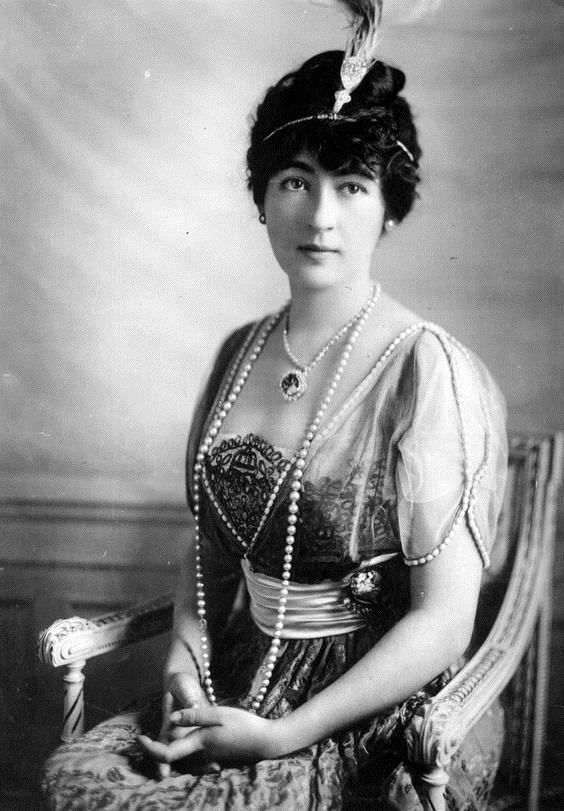
Image 10: American heiress Evelyn Walsh Mclean (1886-1947) photographed in 1912 wearing a feathered aigrette set with the 94.80 carat Star of the East diamond purchased at Cartier during her honeymoon in Paris in 1908. Around her neck she wears the 45.52 carat deep-blue diamond, The Hope Diamond, acquired in 1911.
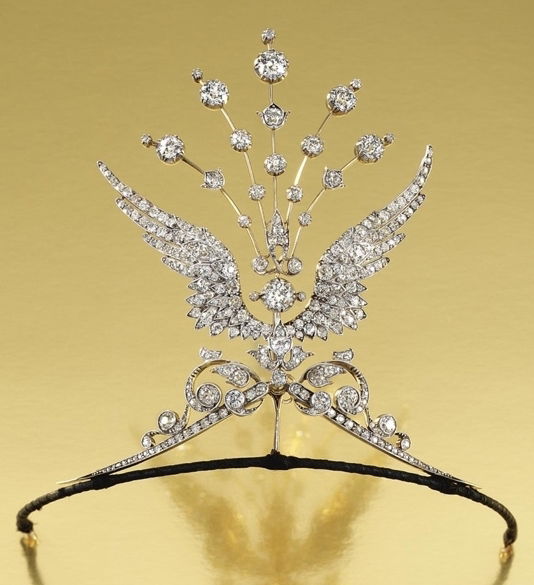
Image 11: A diamond wing aigrette/tiara, circa 1910. This jewel would have been worn in combination with real feathers.
In the 1930s bandeaux assumed architectural forms often raised at the centre in skyscraper-like motifs. More traditional tiaras assumed the shape of elaborate haloes decorated with the palmette and fan-shaped motifs favoured by Art Deco (see images 14 and 15).
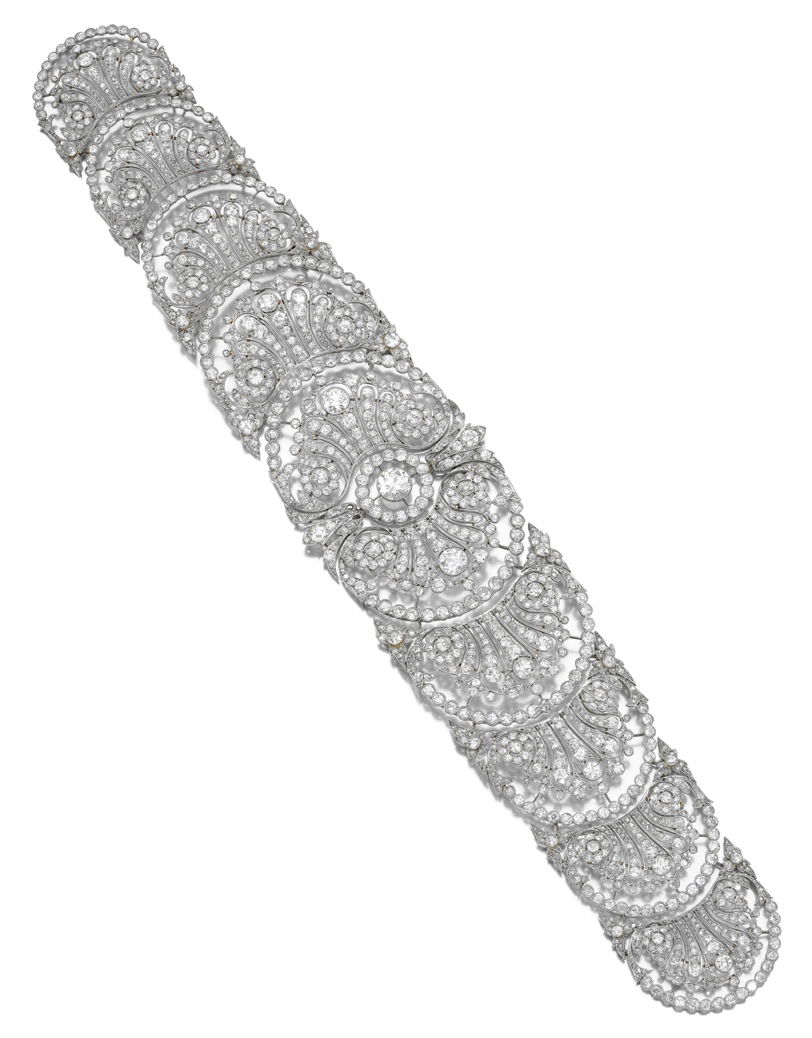
Image 12: A diamond bandeau designed as a graduated series of open work plaques of palmette design, French, probably by Chaumet, circa 1920.
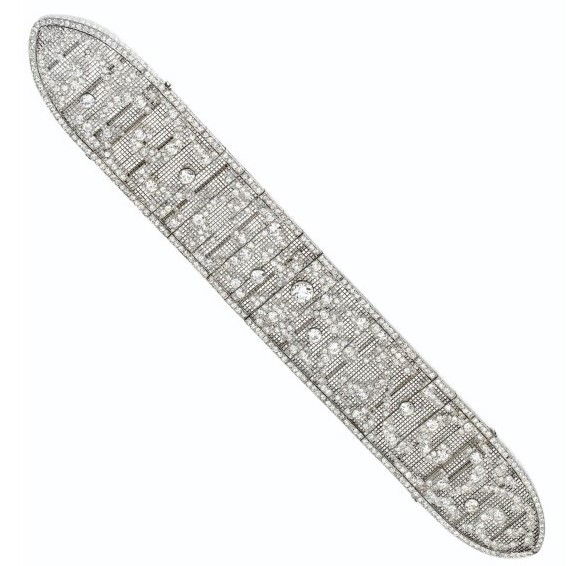
Image 13: A diamond bandeau by Cartier, purchased in 1912 by Mrs Nancy Leeds, later Princess Anastasia of Greece, one of the firm’s most loyal customer prior to the First World War. In this jewel platinum threads form a grid of “fabric” onto which diamond tendrils are “embroidered". Like many jewels of the period, this bandeau is multi-purpose. The two shield-shaped ends can detach allowing the central portion to be worn as a bracelet. Joined together, these ends form a elegant brooch.
The outbreak of the World War II and the austerity of the years which followed were not conducive to the creation of tiaras but they made a come-back in the 1950s: débuts, court occasions, balls and the rich, sumptuous evening dresses of the time required the wearing of precious tiaras, but the era of purpose-made hair ornaments was over and most tiaras in the 1950s simply consisted of necklaces suitably supported by a rigid metallic structure. A particular style or design for tiaras therefore did not exist, but all types of draped, swagged, floral or foliate necklaces fashionable at the time, when turned upside down, became suitable hair ornaments (see image 16).
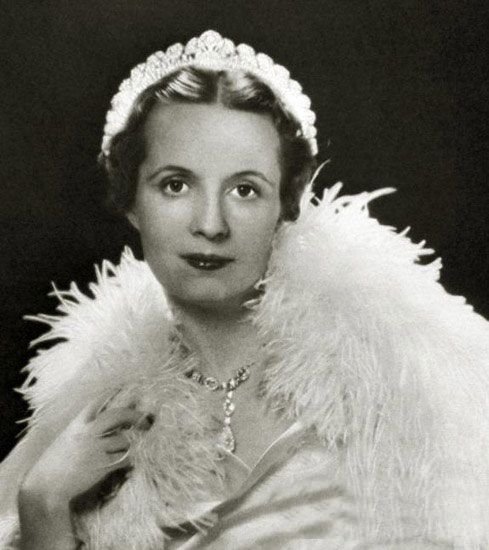
Image 14: Princess Andrée Aga Khan, neé Andrée Joséphine Carron, (c. 1898-1976), third wife of Mohamed Shah Aga Khan III, wearing her 1934 Cartier halo tiara.
The advent of the 1960s and the great changes in social attitudes that followed, marked the final disappearance of tiaras from the design books of the jewellers. With very few exceptions all tiaras worn after this date were the product of the previous decades or of the 19th century, and since the occasions that still required them tended to be formal – weddings or state related – the lack of contemporary designs for this type of jewel did not really matter.
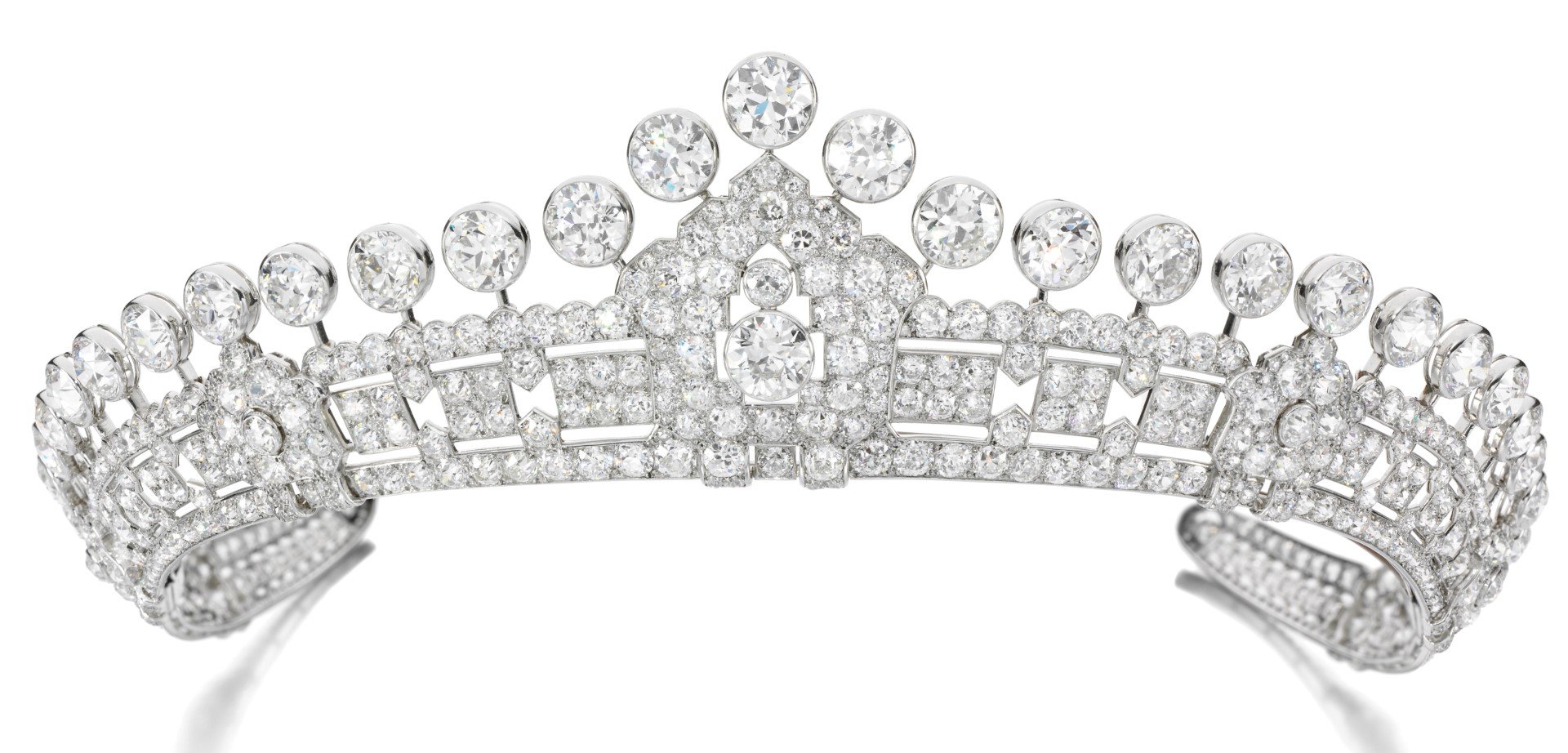
Image 15: A diamond tiara by Cartier, 1930s, created for Mary, Duchess of Roxburghe, of imposing architectural design.
However, the advent of the new century, brought back a revival of the fashion for jewels for the hair. Elton John’s White Tie and Tiara balls and similar glamorous events in private houses reignited the interest in tiaras and encouraged jewellers such as Chaumet, Cartier, Boucheron,Van Cleef & Arpels and Tiffany, to produce, in the last decade of the 20th century, sleek and modern interpretations of these classic head ornaments that met the taste and style of the younger generations. Tiaras – vintage or new – together with necklaces and brooches worn in the hair have definitely made a statement on the red carpet in recent years, encouraging women to adorn their hairstyles with jewels not only on their wedding day but also for special occasions.
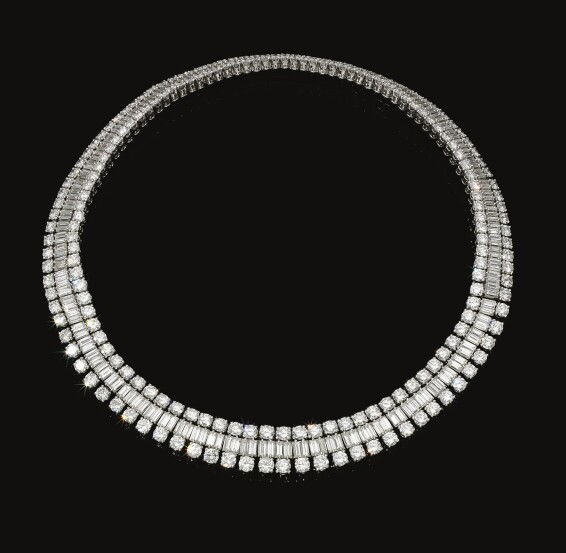
Image 16: A diamond necklace/tiara by Mellerio dits Meller, Paris, circa 1960. A simple but elegant design popular with many jewellers in the 1950s and early 1960s.

